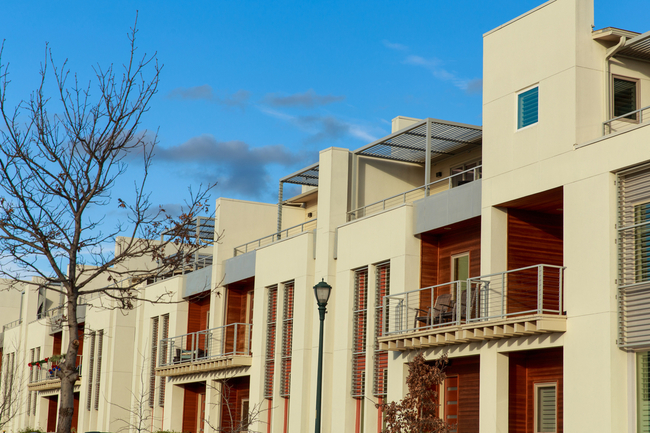Healthy Aging and Women in Los Angeles County
A baby born in 2017 in the United States can expect to live an average of almost 79 years – nearly 10 years longer than a baby born in 1960. As life expectancy increases (learn more about life expectancy in Los Angeles County here) and the large Baby Boomer generation continues to age into their 60s and 70s, the portion of the population over 65 will continue to grow in the coming decades. According to the Census Bureau, by 2035, one in every five U.S. residents will be of retirement age, and people over the age of 65 will outnumber children under 18 for the first time in U.S. history.
Within the growing aging population, women face a different set of needs and outlive their male peers by an average of 5 years. This story, developed in partnership with the Los Angeles County Department of Public Health (DPH) Office of Women’s Health, explores the unique challenges facing the aging population, particularly women, and what is being done to address the growing need for age-friendly places and services.
Changing Demographics in Los Angeles
Women ages 65 and older are becoming the fastest growing demographic group in Los Angeles County. According to projections from the California Department of Finance, by 2060, the number of women 65 years and older will be roughly equal to the total number of women between 15 and 49 years of age. Over time, older women will also become increasingly racially and ethnically diverse – the number of women 50 years and older will increase for every racial/ethnic group except for white women through 2060. Explore female population projections in Los Angeles County over the next 40 years in the graph below.
Socioeconomic and Health Challenges
Women face a unique set of challenges throughout their lives compared to men, including lower wages and higher rates of poverty. 2017 American Community Survey (ACS) estimates show that in every age group, a larger portion of women in Los Angeles County are living in poverty (below 100% of the federal poverty line) than their male counterparts.

The gender disparity in poverty rates is particularly pronounced in young adults (in their 20s and 30s) and older adults (in their 70s and 80s). Approximately 5% more women are living in poverty in these age groups compared to men, while the difference is closer to 1% for men and women in middle age groups (40s, 50s and 60s). This difference could be tied to income stability from marriage, as middle-aged women are more likely to be married than both younger women and older women (who often outlive their spouses).
Living at or near the poverty line poses a particular challenge for older adults as they tend to have more health conditions and healthcare costs than younger people. The 2015 LA County Health Survey (LACHS) asked respondents if they had ever been told by a doctor that they have any of the following four chronic conditions: a depressive disorder (including things like depression, bipolar disorder and manic depression), diabetes, high cholesterol or hypertension. More than 65% of women over 50 had been diagnosed with one of the conditions compared to 28% of women under 50. Women over 50 were also five times more likely to report multiple chronic conditions compared to women under 50. Explore the prevalence of chronic condition diagnoses for women in Los Angeles County in the chart below.
In addition to disparities across gender in the aging population, there are also disparities across race and ethnicity. Latina women – the fastest growing ethnic group within the aging female population – face significantly greater health risks later in life due to socioeconomic factors like lower educational attainment and lifetime earnings. According to a 2017 report from the LA County Department of Public Health, these disparities result in higher rates of obesity, diabetes-related mortality, and self-reported poor health status. Further, Latina women in LA County are at greater risk of developing chronic health conditions. Based on the 2015 LACHS, 40% of Latinas 50 years or older reported being diagnosed with more than one chronic condition compared to only 30% of white women in the same age group.
Social Isolation
In addition to higher rates of poverty and physical health challenges, mental health issues and social isolation also increase the vulnerability of aging women. Across both genders, mental health is a growing concern in the aging population, and older adults have the highest suicide rate of any group. In Los Angeles County, women over 65 reported higher rates of current depression (11%) than their male counterparts (7%) on the 2015 LACHS.
One reason for higher rates of depression in the older female population could be related to living alone and social isolation. While men and women under the age of 64 live alone at approximately the same rates (8-9%) in Los Angeles County, women are more likely to live alone as they age. According to 2017 ACS 5-year estimates, 26% of women 65 years and older reported living alone compared to only 17% of men. This highlights a need to cultivate social networks and community specifically for older women in Los Angeles. Research shows that public health strategies that promote continued social engagement can be restorative and contribute to the health and well-being of women as they age, especially those living alone.
In addition to living alone, not speaking English can also lead to social isolation for older men and women. Asian women are the second largest growing segment of older women in Los Angeles County and are significantly more likely to report not speaking English at all or not speaking it very well. This language barrier undermines their ability to access health resources and further contributes to isolation and lack of social connectedness. Data from the 2015 LACHS show that although 64% of women 50 years of age or older across racial/ethnic groups reported always or usually getting the social and emotional support they needed, only one-third of Asian women reported the same. Explore how aging women in various racial/ethnic groups reported receiving social and emotional support in the chart below.
Community Strategy for Healthy Aging
Given the unique challenges faced by the growing older population, and in particular, older women, the concept of Healthy Aging has emerged as a public health goal for older adults. According to the World Health Organization (WHO), Healthy Aging involves sustaining the mental and physical capacity to carry on with the day-to-day activities that people value as they get older. It also means establishing a living environment—in homes, communities, and society —that supports the well-being and happiness of aging adults. According to WHO, “age friendly” communities should include things like affordable housing, outdoor green spaces with sufficient seating, reliable and frequent public transportation for those who can no longer drive, and events and volunteer activities appropriate for all ages at local community centers.



In 2006, the American Association for Retired Persons (AARP) in partnership with WHO launched an effort called “Age Friendly Communities” to help cities prepare for rapid population aging, with current involvement of over 360 cities in the U.S. and many others abroad. In May of 2016, the City and County of Los Angeles joined the Age Friendly Communities network by launching an initiative called Purposeful Aging Los Angeles (PALA). PALA includes representatives from local government, the private sector and universities, and has spent the last two years engaging over 14,100 people to develop a set of recommendations to make Los Angeles an age friendly region for its diverse population. PALA plans to spend the next three years implementing the recommendations.
In addition to PALA, other efforts are underway to address the specific needs of older adults. The Los Angeles Alliance for Community Health and Aging (LAACHA) is a collective of local government, community-based organizations, and healthcare providers that promote chronic disease prevention strategies and community-based health interventions. LAACHA is currently chaired by the Office of Women’s Health in the Los Angeles County Department of Public Health, and has a broad commitment to many issues faced by the aging population, including chronic disease, mental health, social isolation, and poverty.


Los Angeles County’s population is rapidly aging. Fortunately, our local governments, businesses and nonprofits, foundations, and healthcare providers are quickly making and implementing plans to make us an age friendly city and county. In the process, they are taking the time to identify the unique needs of women and people of color to build a unique solution for our increasingly diverse region.

Colin Caprara
Colin Caprara is a Research Assistant at Price Center for Social Innovation and a Master of Public Policy student at University of Southern California. As a public policy researcher, Colin is interested in using data to improve equitable access to education, housing, and employment. Prior to USC, Colin worked at Reno & Cavanaugh PLLC where he conducted legal and political research on public housing. Before that, Colin served the U.S. Senate Select Committee on Ethics where he researched Congressional history, parliamentary rules, and case law.
Sources
Age-Friendly Action Plan for the Los Angeles Region 2018-2021. (n.d.). Retrieved March 4, 2019, from https://www.purposefulagingla.com/sites/default/files/Age-Friendly Action Plan for the Los Angeles Region 2018-2021-V12-compressed.pdf
California Department of Finance (2019). P-2: County Population Projections (2010-2060). Retrieved on April 18, 2019 from: http://www.dof.ca.gov/Forecasting/Demographics/Projections/
Center for Disease Control (2013). The State of Aging and Health in America 2013. Retrieved March 4, 2019, from https://www.cdc.gov/aging/pdf/State-Aging-Health-in-America-2013.pdf
Desrosiers, J., Noreau, L., & Rochette, A. (2004). Social participation of older adults in Quebec. Aging clinical and experimental research (Vol. 16). https://doi.org/10.1007/BF03324572
Holt-Lunstad, J., Smith, T. B., & Layton, J. B. (2010). Social relationships and mortality risk: a meta-analytic review. PLoS Medicine, 7(7), e1000316. https://doi.org/10.1371/journal.pmed.1000316
Los Angeles Alliance for Community Health & Aging – About Us. (n.d.). Retrieved March 4, 2019, from http://publichealth.lacounty.gov/owh/docs/Conferences/LAACHA-Flyer-Registration.pdf
Rowe, J. W., & Kahn, R. L. (1997). Successful Aging. The Gerontologist, 57(4), 433–440. https://doi.org/10.1080/00335637109383091
Saint Mary’s University (2017). Report on the Status of Women in Los Angeles County. Retrieved on April 25, 2019 from: http://laccw.lacounty.gov/LinkClick.aspx?fileticket=NJktwmFfoac%3D&portalid=10
Cover Photo: Photo courtesy of Istock/fstop123
Photo 1: Photo courtesy of Istock/TatyanaGI
Photo 2: Photo courtesy of Istock/SDI Productions
Photo 3: Photo courtesy of Istock/EH Stock
Photo 4: Photo courtesy of Istock/TriciaDaniel
Photo 5: Photo courtesy of Istock/kali9
Photo 6: Photo courtesy of Istock/aldomurillo

